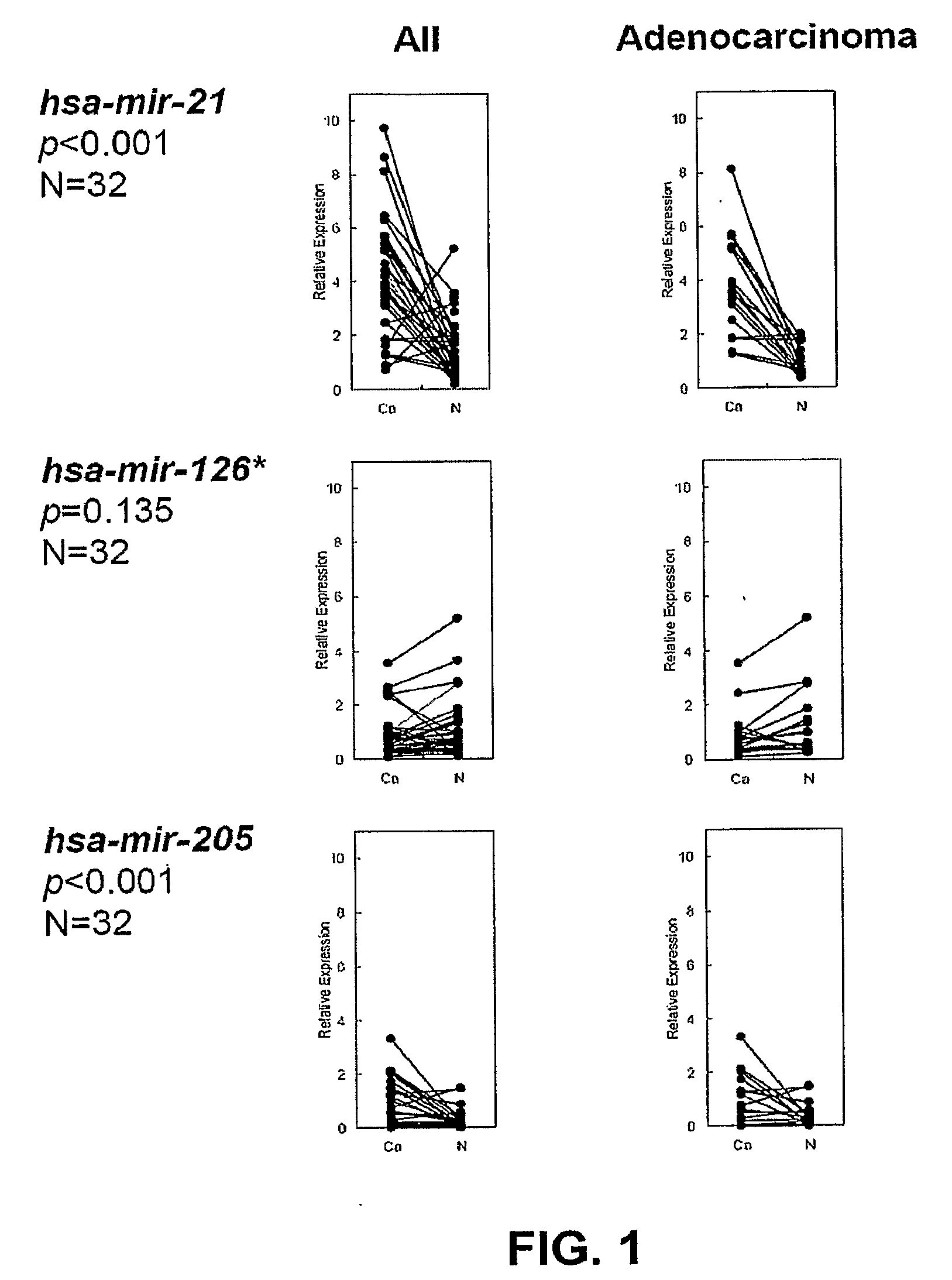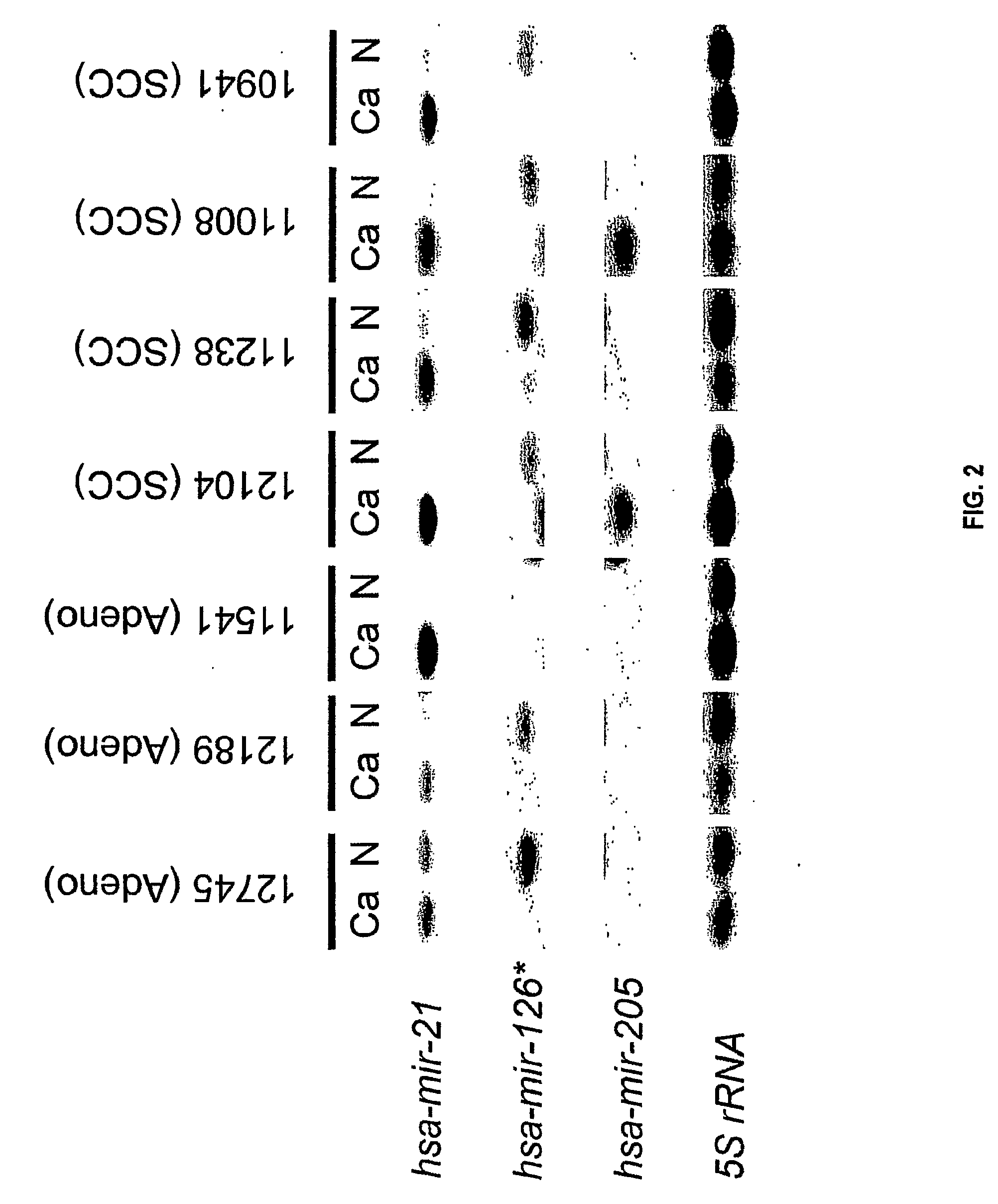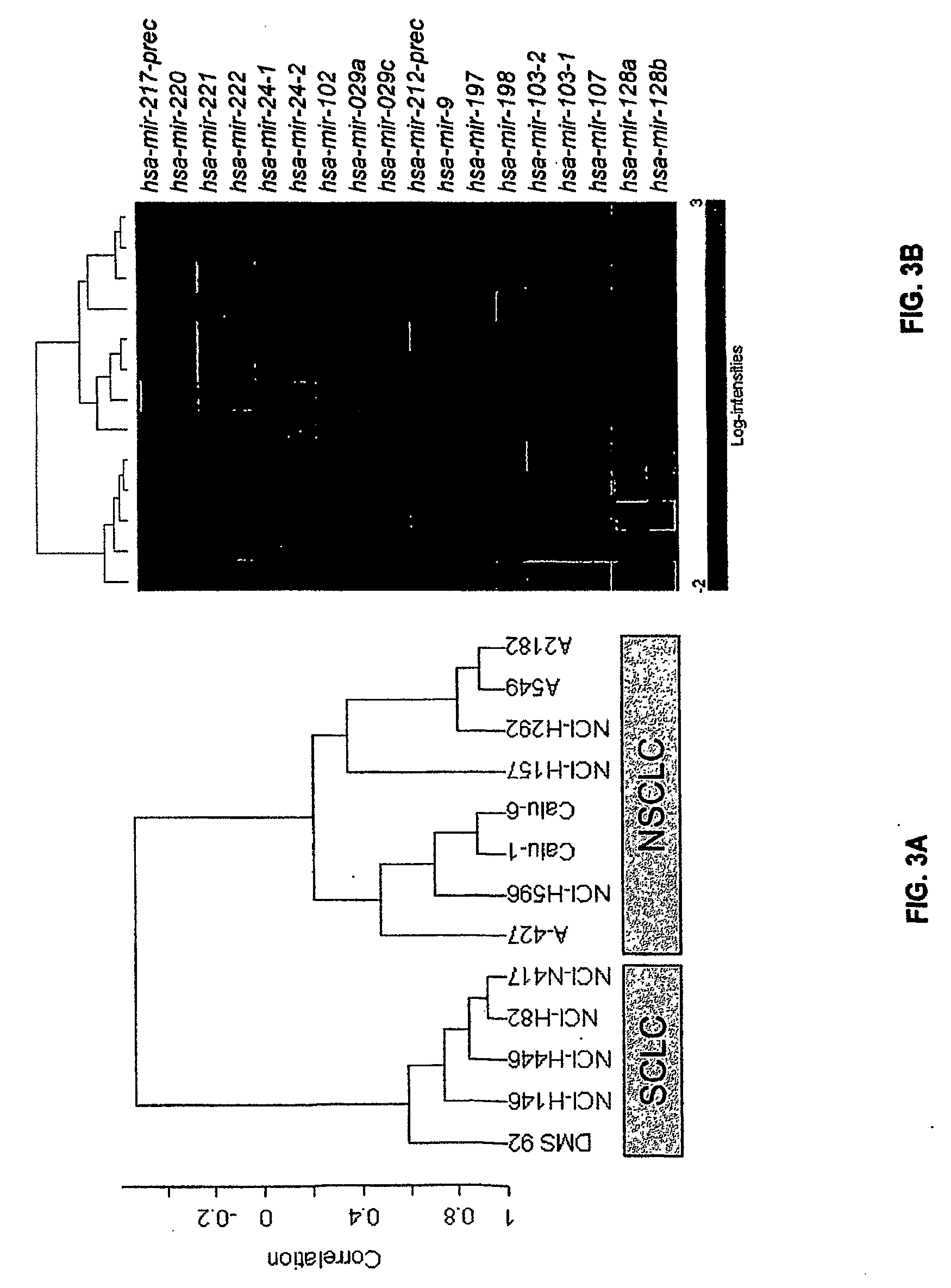Microrna-Based Methods and Compositions for the Diagnosis, Prognosis and Treatment of Lung Cancer
a microrna-based, lung cancer technology, applied in the direction of drug compositions, organic chemistry, biochemistry apparatus and processes, etc., can solve the problems of lung cancer remaining difficult to diagnose and treat effectively, 16% of lung cancers discovered, and difficulty in early detection, so as to reduce the expression level, increase the level of mir gene product, and reduce the effect of expression level
- Summary
- Abstract
- Description
- Claims
- Application Information
AI Technical Summary
Benefits of technology
Problems solved by technology
Method used
Image
Examples
example 1
Altered miRNA Expression in Primary Lung Cancers
Materials and Methods
Samples
[0130]104 pairs of primary lung cancer and corresponding noncancerous lung tissues were used in this study. An additional 32 cases, which could be followed up until 5 years, were used for an independent validation dataset. These tissues were obtained between 1990 and 1999 as surgical specimens from patients in the Baltimore metropolitan area, with informed consent and in agreement with the Institutional Review Board. Lung cancer tissues were obtained from 65 lung adenocarcinoma patients and 39 lung squamous cell carcinoma patients. 65 male and 39 female patients, having a median age of 65 (range 38-84), comprised the set. 65 tumors were classified as stage I, 17 as stage II, and 22 as stage III or IV tumors. For the majority of samples, clinical and biological information was available. Total RNA from tissues was isolated by TRIzol® Reagent (Invitrogen), according to the manufacturer's instructions.
Microarra...
example 2
Distinct miRNA Expression Signatures in Human Lung Cancer Cell Lines
Materials and Methods
Samples
[0140]Thirteen lung cancer cell lines, consisting of five small cell lung carcinoma (SCLCs) cell lines and eight non-small cell lung carcinoma (NSCLCs) cell lines, were used in this study. The 5 SCLC cell lines were DMS 92, NCI-H82, NCI-H146, NCI-H446, and NCI-H417 (American Tissue Culture Collection). The eight NSCLC cell lines were NCI-H157, Calu-1, Calu-6, NCI-H292, NCI-H596, A-427, A549, and A2182 (American Tissue Culture Collection, Manassas, Va.). Total RNA from tissues and cultured cells was isolated by TRIzol® Reagent (Invitrogen, Carlsbad, Calif.), according to the manufacturer's instructions.
Microarray Analysis
[0141]Microarray analysis was performed as previously described (Liu, C. G., et al., Proc. Natl. Acad. Sci. U.S.A. 101:9740-9744 (2004), see also, Example 1);
[0142]Statistical analyses were performed as described hereinabove (see, e.g., Example 1).
Resul...
example 3
Identification of miRNiAs Associated with Clinicopathological Features of Lung Cancer
Materials and Methods
Microarray Analysis
[0144]Microarray analysis was performed as previously described (Liu, C. G., et al., Proc. Natl. Acad. Sci. U.S.A. 101:9740-9744 (2004), see also, Example 1).
[0145]Statistical analyses were performed as described hereinabove (see, e.g., Example 1).
Results
[0146]Whether the microarray data revealed specific molecular signatures for subsets of lung cancer that differ in clinical behavior was analyzed. For this analysis, the relationship of five types of clinical and pathological information were examined (Table 2). In the histological classification, six miRNAs (hsa-mir-205, hsa-mir-99b, hsa-mir-203, hsa-mir-202, hsa-mir-102, and hsa-mir-204-prec) that were expressed differently in the two most common histological types of NSCLC, adenocarcinoma and squamous cell carcinoma, were identified. The expression levels of hsa-mir-99b and hsa-mir-102 w...
PUM
| Property | Measurement | Unit |
|---|---|---|
| weight | aaaaa | aaaaa |
| volume | aaaaa | aaaaa |
| number-average molecular weight | aaaaa | aaaaa |
Abstract
Description
Claims
Application Information
 Login to View More
Login to View More - R&D
- Intellectual Property
- Life Sciences
- Materials
- Tech Scout
- Unparalleled Data Quality
- Higher Quality Content
- 60% Fewer Hallucinations
Browse by: Latest US Patents, China's latest patents, Technical Efficacy Thesaurus, Application Domain, Technology Topic, Popular Technical Reports.
© 2025 PatSnap. All rights reserved.Legal|Privacy policy|Modern Slavery Act Transparency Statement|Sitemap|About US| Contact US: help@patsnap.com



